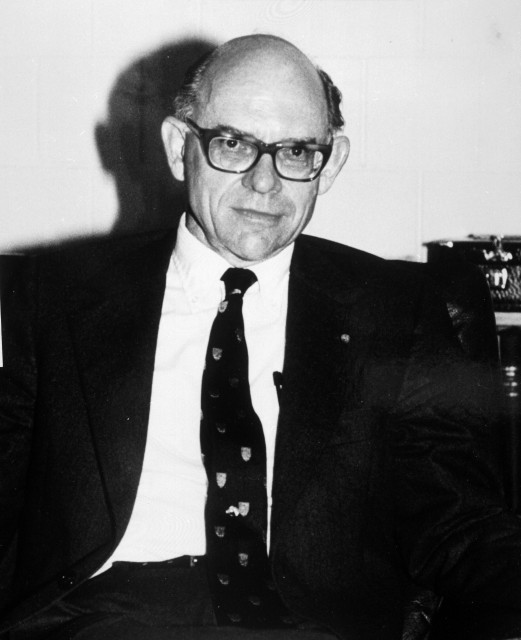F. (Frank) Albert Cotton
1930-2007

Recognition of the structural and theoretical significance of the rhenium-rhenium quadruple bond (in Re2Cl82-) by Cotton in 1964 led to the systematic exploration of metal-metal multiple bonding in transition metal complexes. This is perhaps the most significant development in 20th century inorganic chemistry. Cotton is also one of the most prolific crystallographers in the world, having determined well over 2000 "small molecule" structures, as well as one of the first high resolution enzyme structures, staphylococcal nuclease.
With Wilkinson (see portrait) Cotton co-authored "Advanced Inorganic Chemistry", the leading textbook in its field. His "Chemical Applications of Group Theory" was instrumental in teaching chemists the mathematics they needed to know to deal with molecular symmetry.
A Philadelphia native, Cotton took the A.B. at Temple University, and the Ph.D. at Harvard with Geoffrey Wilkinson (1955). He then joined the M.I.T. faculty where he became Professor in 1961. In 1972, he became Robert A. Welch Distinguished Professor at Texas A. and M. University. Cotton has received numerous honorary degrees and awards, among which are the first ACS Award in Inorganic Chemistry (1964), the first ACS Award for Distinguished Service in the Advancement of Inorganic Chemistry (1974), the National Medal of Science (1982) and the ACS Priestley Medal (1998).
Sponsor: Kim Dunbar
Location in chemistry building: Fourth Floor; Elevator area East Wall; Sequence 1
Source: Professor Cotton